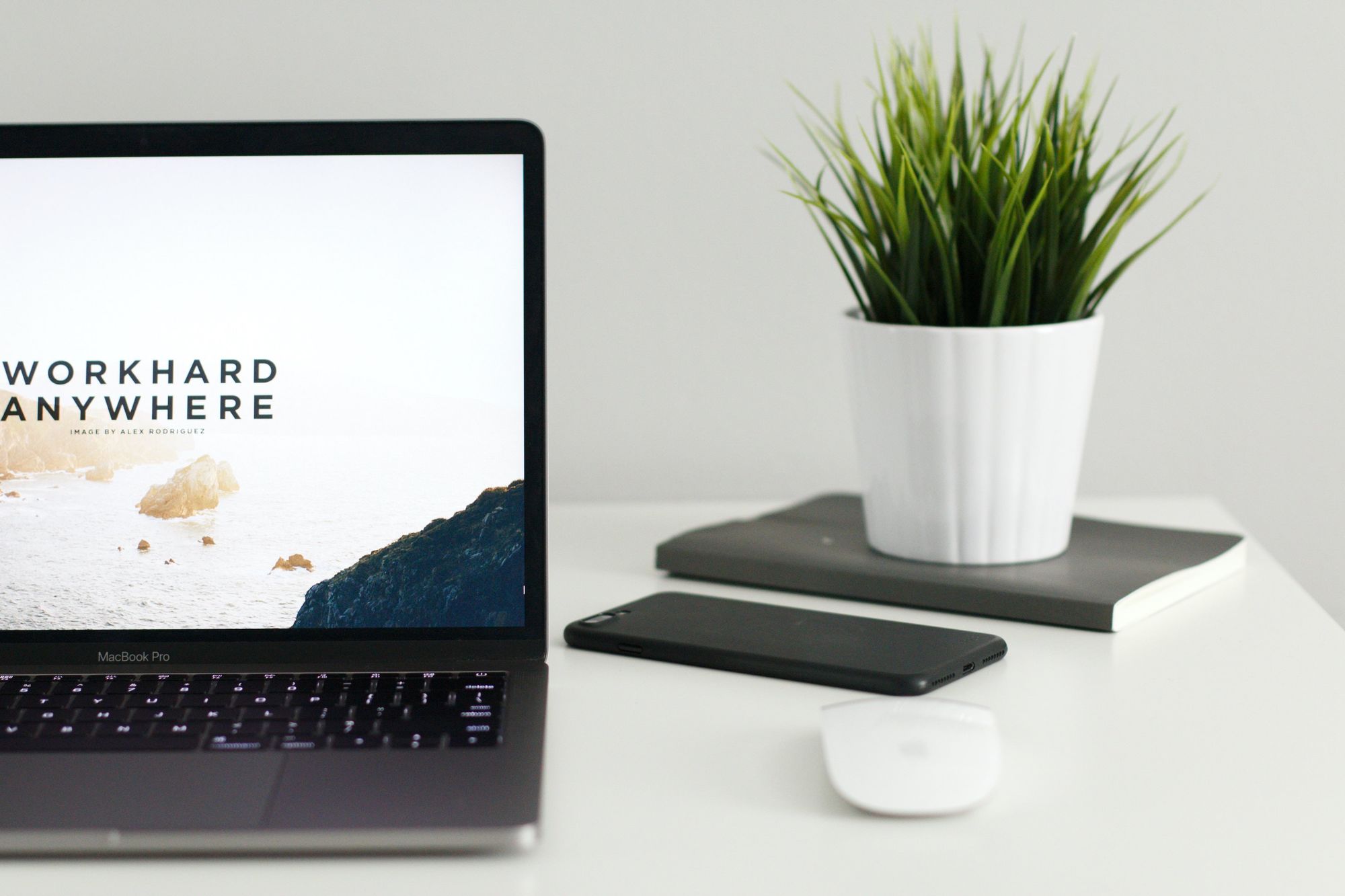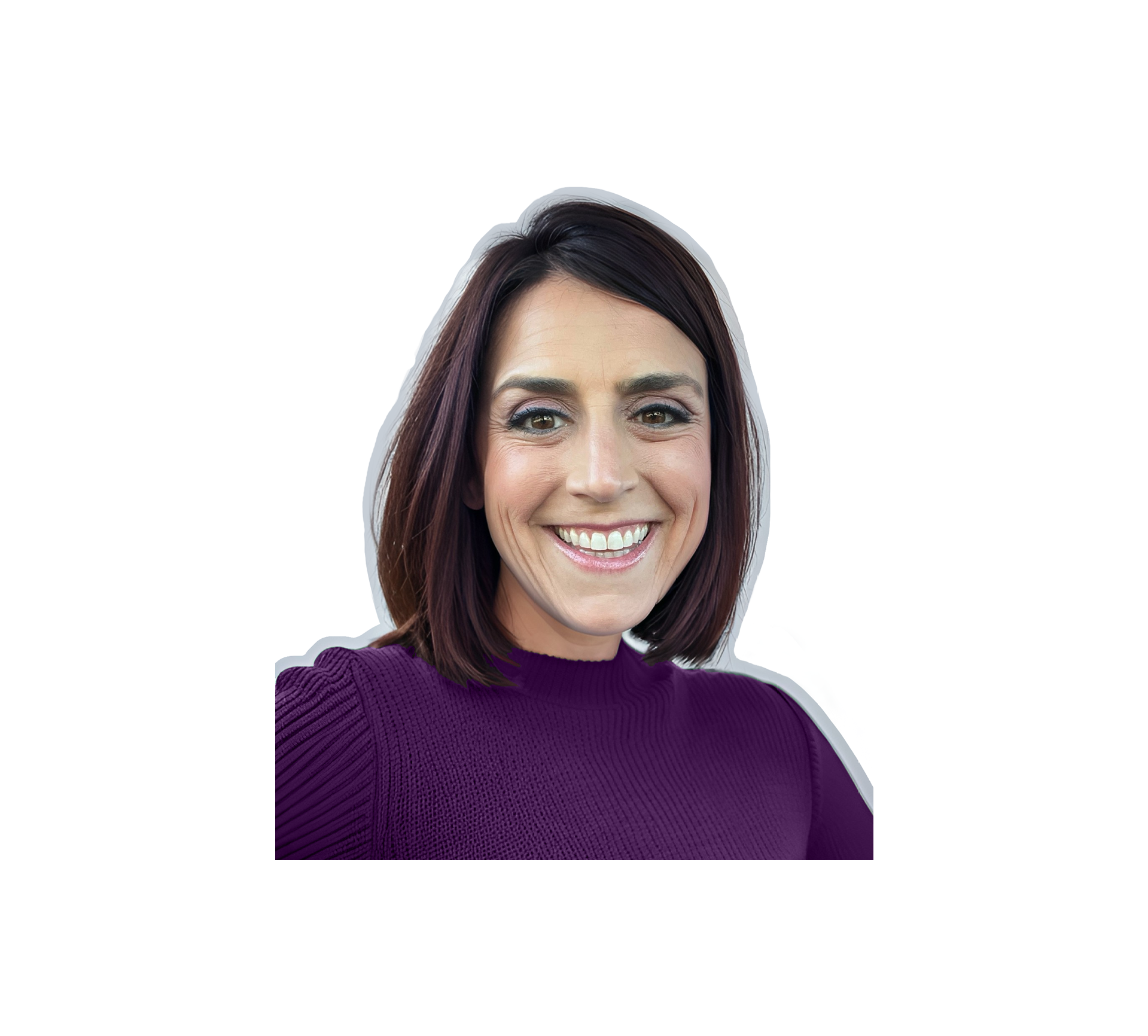You might have a website, but is it working for you?
Is it bringing you more leads and sales, or is it just sitting there collecting dust?
If you want to turn your website into a powerful marketing machine, you need to leverage the power of landing pages and sales pages.
Key takeaway: Your website alone isn’t enough to generate leads and sales online. To generate more leads and sales, use landing pages or sales pages strategically.
These aren’t just ordinary web pages. They’re laser-focused, high-converting marketing pages to attract, engage, and convert your ideal customers at every stage of the sales funnel.
But how do you know when to use a landing page or a sales page? What makes them different from each other? And how can you create them without breaking a sweat?
Don’t worry, we’ve got you covered.
In this guide, we’ll show you everything you need to know about landing pages and sales pages. We’ll explain the key differences between them, how to choose the right one for your goals, and how to create them with ease. We’ll also share some common mistakes and best practices to help you avoid costly errors and boost your conversions.
Are you ready to take your business to the next level? Let’s jump in!
What is a Sales Page?
A sales page is a standalone web page used to generate sales.
The core purpose of a sales page is to persuade your potential customers to buy your product or service. Easy enough, right?
Here’s an example of a sales page and how it looks (see complete page here):

The purpose of the page is simple and clear: To make visitors buy.
It features no navigation, just a detailed sales page with multiple CTA buttons.
There are two major types of sales pages:
- Long-form sales page
- Short-form sales page
1. Long-Form Sales Page
A long-form sales page is a type of sales page that relies heavily on content and features a lengthy copy. These pages often resemble long-form content or single-page websites. The example above is a long-form sales page that includes a substantial amount of content.
2. Short-Form Sales Page
Short-form sales pages are typically brief with concise copy. They are useful when potential customers are already aware of your product and need a final push to move to the next stage of the sales funnel.
A long-form page doesn't always work. Sometimes, it makes more sense to use a short-form sales page. For example, switching to a short-form sales page increased the conversion rate by 102.5% in the following case:

Purpose of a Sales Page
The primary purpose of a sales page is to make a hard sell of your product or service. You should send warm traffic - those who are already interested in your product and ready to purchase - to your sales page. Sales pages are not intended for cold traffic, as they are designed to aggressively push your product. It makes more sense to target people who are in the middle of the funnel.
What is a Landing Page?
A landing page, also known as an opt-in page, is a marketing page used to generate leads by capturing the contact information of visitors. It is a standalone web page created for a marketing campaign where traffic is sent from an advertising campaign.
Landing pages do not sell anything. Instead, they offer something of high value to visitors such as a free online course, free trial of software, checklist, guide, case study, etc.
This is known as a lead magnet.
Here’s a landing page example:

This page doesn’t sell anything, it has one purpose: To make visitors click the call-to-action (CTA) button and complete the registration form on the next page.
Here’s the registration page:

In order to get the free guide, visitors must provide their contact information, including their name, email address, phone number, and other relevant details.
This is one type of landing page where visitors are guided to the next step through a CTA button. Keep in mind – not all landing pages have the same design or structure.
Here are the major types of landing pages you’ll come across:
- Squeeze page
- Click-through landing page
- Lead generation landing page
- Long-form landing page
- Product landing page
1. Squeeze Page
A lead capture page is a type of landing page used to collect email addresses from visitors. It typically contains minimal form fields, usually 1-2, and minimal copy.
Here’s an example of a squeeze page:

It has a headline, short copy, and a single form field.
2. Click-Through Landing Page
This type of landing page does not have a form. Instead, your target audience must click a button to access the form and complete it for lead generation. A click-through landing page is used to introduce visitors and set expectations. It helps to warm up your leads.
Here’s a great click-through landing page example:

3. Lead-Generation Landing Page
This is a specialized landing page used for capturing leads. Unlike a squeeze page, it collects more information from potential customers beyond just their email address and name.
Here’s an example of a lead-generation landing page:

See the number of form fields? This is what sets a lead-generation landing page apart from a squeeze page which only asks for an email address.
4. Long-Form Landing Page
Long-form landing pages are detailed and have lots of copy geared specifically towards boosting the conversion rate of the page. This is where you’ll add quotes, testimonials, statistics, and anything else that will add to your credibility and make customers more interested in engaging with your CTA.
This page is different from a long-form sales page since it’s used for lead generation, rather than for generating sales.
5. Product Landing Page
A dedicated landing page is used to promote or pre-sell a product without hard selling it. Its purpose is to generate a lead.
A product landing page generates leads most effectively by being highly targeted to a specific product or offer.
Here’s an example of a product landing page:

Is the Home Page the Same as Landing Page?
Your home page is different from a landing page.
A homepage is the default front page of your website, serving as a starting point with links to internal pages and other parts of your website. It is a multipurpose page that isn't restricted to a single objective. It contains menus, links to products and services, and provides an overview of your business and products to visitors.
A landing page, on the other hand, is a marketing page focused on generating leads. It doesn’t link to other parts of your website, has no menu, and is targeted at a specific customer or persona. Because of this, it’s less suitable as the face of your website or business, like a home page.
Purpose of a Landing Page
A landing page done well operates as a lead generation machine. It offers visitors something they can’t resist: a valuable solution to their problem. In return, visitors give you their contact information, so you can follow up with them and nurture them into customers.
This solution is called a lead magnet, and it can be anything from a free ebook to a video tutorial to a gated article. The key is to make it relevant, useful, and appealing to your target audience, like this paywall from The New York Times:

Subkit lets you create simple but powerful pages in minutes. It’s free to use and works for any kind of business and product, whether it’s digital, physical, or service-based. Create pages that sell your product and get people to take action: Start your Subkit!
Sales Page Vs Landing Page
Here’s a quick breakdown of the key differences between a sales page and a landing page:
1. Purpose
The purpose of a sales page is to generate sales, while a landing page is used for lead generation. This difference in purpose is reflected in the structure and copy of both types of pages.
The purpose of a sales page is to hard sell a product or service to potential customers. It directs traffic to the payment processor where the target audience can complete the purchase. Visitors to the sales page have only two options: to buy the product or service and become a customer, or to leave the page without converting.
Landing pages are not designed to sell or even pre-sell products or services (although it is possible in rare cases). Instead, they are used to collect contact information from visitors – typically a name, email address, and occasionally a phone number.
Visitors who successfully submit a form will receive a lead magnet and enter your sales funnel.
2. Offer
A sales page is where you sell your product or service to your prospects. You show them how your offer can solve their problem, make their life better, or help them achieve their goals. You highlight the features, benefits, and value of your offer, and you give them a clear call to action to buy it. Your offer can be anything from your main product to an add-on, a bundle, or an upgrade.
A landing page is where you give away something for free to your prospects. You offer them a valuable resource that can help them with their problem, educate them on a topic, or entertain them. This resource is called a lead magnet, and it’s how you get their contact information, so you can build a relationship with them and eventually sell them your product or service. A lead magnet can be anything from a cheat sheet to a webinar to a quiz. The key is to make it relevant, useful, and irresistible to your prospects.
For a lead magnet to be effective, it must have two characteristics:
- It must be free
- It has a high value (both real and perceived)
3. Specific Action
On a sales page, the conversion action is a purchase.
On a landing page, it’s a sign-up or registration.
A sales page has one purpose: to make people buy your product. You persuade them with compelling copy, testimonials, guarantees, and other elements that show them why your product is the best solution for their problem. The only action you want them to take is to click the buy button and complete the purchase.
A landing page has a different purpose: to make people sign up for your free offer. You entice them with a valuable resource that can help them with their problem, such as a report, a video, or a coupon. The only action you want them to take is to fill out a form with their name and email address.
4. Sales Funnel Stage

A sales page targets visitors at the bottom of the sales funnel, while a landing page targets visitors in the middle of the funnel.
A sales page is targeted towards people who are at the decision-making stage and are ready to become customers. This means that the sales page is aimed at individuals who are at the bottom of the sales funnel, have interacted with your business multiple times, and have a good understanding of your company’s products and services.
The landing page targets people in the middle of the funnel. It precedes the sales page in the sales funnel because the first step is lead generation. These leads are then nurtured over time by your sales team, social media posts, blog posts, emails, and other interactions. Finally, you pitch your sales page to hot leads.
5. Conversion Rate
Compared to the average conversion rate of a landing page, the average conversion rate of a sales page is quite low. But it’s to be expected, we’ll explain.
Sales pages typically have low conversion rates because they involve a purchase. If you examine a sales funnel, you will see that it narrows at the bottom because not all people progress to the bottom of the funnel and become a customer. The phenomenon where a potential customer leaves or exits your conversion funnel for any reason is known as "funnel leakage." FunnelEnvy has more information on funnel leakage, if you’re curious.

The average conversion rate of landing pages is higher because it doesn’t involve any monetary transaction. Instead, your target audience only needs to fill out a form and submit it to gain access to the lead magnet. This significantly boosts the conversion rate – estimated to be around 9.7% on average.
Landing pages typically have a slightly higher conversion rate than sales pages.
6. CTA Button
Sales pages typically have multiple CTA buttons.
Landing pages generally have only one or two CTAs.
A sales page needs multiple CTAs to make people buy your product. You can’t expect them to scroll all the way down to find the buy button. You need to give them multiple opportunities to click and buy throughout the page, especially if it’s a long one. Every CTA on a sales page should lead them to the checkout page.
A landing page needs only one or a few CTAs to make people sign up for your free offer. You don’t want to distract them with other options or links. You want to focus their attention on the one action you want them to take: fill out the form and get the free offer. The main CTA on a landing page should be right below the form, so they can easily see it and click it.
On sales pages, all CTAs move people closer to buying your product.
On landing pages, all CTAs move people closer to getting your free offer.
7. Target Audience
The target audience of a sales page is qualified leads ready to purchase.
Sales pages target leads who have been warmed up by your sales team and have shown interest in your product. They have interacted with your brand multiple times and trust you enough to buy from you.
The target audience of a landing page is someone who knows your business, but may be somewhere else in the sales funnel.
Landing pages target leads who have discovered your business through a blog post, a social media post, a search query, or another way. They are not on your email list yet and are not in your CRM system. A landing page will turn them into leads by giving them a free, valuable resource. When they give you their contact information, they will join your email list and enter your sales funnel.
8. Copy
A sales page should give your prospects all the information they need to buy your product. Whether it’s short or long, it should cover everything from pricing, FAQs, product images, a clear value proposition, and product features and benefits.
Landing pages should give your prospects enough information to sign up for your free offer. They don’t need to be as detailed as a sales page. They only need to focus on the lead magnet and its benefits. That’s why landing page copy is short and sharp, without any pricing details, FAQs, or other distractions.
9. Traffic Sources
Typically, the traffic source for a sales page is direct, while landing page traffic comes from paid sources.
To turn a lead into a customer, you need to connect with them personally and send them to a relevant sales page. For example, you can send people who attended your webinar to your sales page. If your sales page converts well, this is the best way to make them buy your product.
The traffic source for a landing page is usually paid, such as Facebook ads or Google Ads. But you can also use organic sources, such as a blog post or a social media post. These visitors have shown interest in your business but didn’t sign up. To get them back, you can use a remarketing ad campaign.
For example, if you have an online store and a visitor leaves without giving you their email, you can create a remarketing campaign. You can show them targeted Google Ads and offer them your free resource.
The traffic source you use for a landing page or a sales page affects your conversion rate, so it’s a key factor to think about when planning your content.
10. Ease of Development
A sales page is a big project for business owners, while creating a landing page can a breeze (especially on a platform like Subkit that has you up in running in just minutes).
A sales page takes a lot of time, money, and effort to create. You have to write long copy that persuades people to buy your product. You have to test different versions of the page to see what works best. You have to connect the page with your payment processor, ecommerce store, CRM tool, and any other software you use.
A landing page takes much less time, money, and effort to create. You only need short copy that entices people to sign up for your free offer. Sometimes that’s as simple as a headline and a subscribe box. Testing and tweaking landing pages is also easier, as you can quickly change them to address customer questions, and there are limited configuration options, so management is simple.
For example, Subkit lets you create landing pages that sell your product in minutes. You can choose your ideal offering, add your product details, and you’re done. And it’s free to use.
Landing pages are cheaper and simpler to create, perfect for anyone on a budget.
And who isn’t these days?
Which is More Effective for Your Marketing Strategy: Sales Pages or Landing Pages?
To succeed in marketing, you need both sales pages and landing pages. These two pages on your website have different roles. A landing page helps you get leads, while a sales page helps you turn those leads into customers.
You should be adaptable. If you don’t need a full-fledged sales page yet, keep it in mind for later.
When to Use a Sales Page
Use a sales page for your online business when:
- You want to generate sales by converting leads into customers
- You have nurtured your leads and they are ready to purchase
- You are targeting the bottom of the funnel audience in the decision-making stage
When to Use a Landing Page
Use a landing page when:
- You want to generate leads by targeting the middle of the funnel
- You are running an ad campaign
- You want to bring back potential customers who left your website without converting
Use Subkit to Create High-Converting Pages for Your Business
Knowing the difference between a sales page and a landing page is not enough. You need to use them effectively to grow your business. And you can do that by using Subkit.
Subkit lets you create simple but powerful pages, complete with pricing details and more, in minutes. It’s free to use and works for any kind of business and product, whether it’s digital, physical, or service-based – you can sell books or book sessions, it's up to you. It doesn't have to be complicated. Start with a regular newsletter or blog post to demostrate your value, and then offer added perks on top. The possibilities are endless!
Create pages that sell your product and get people to take action. Don’t wait – start your Subkit!



